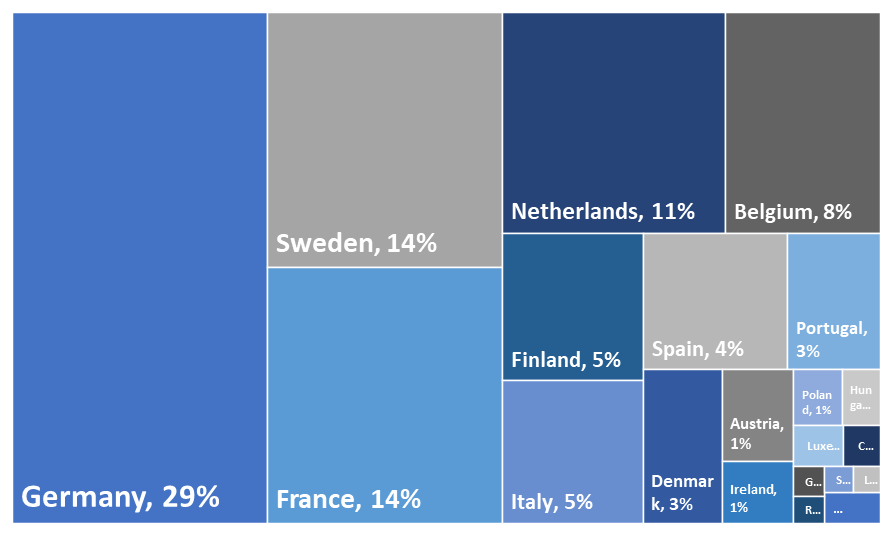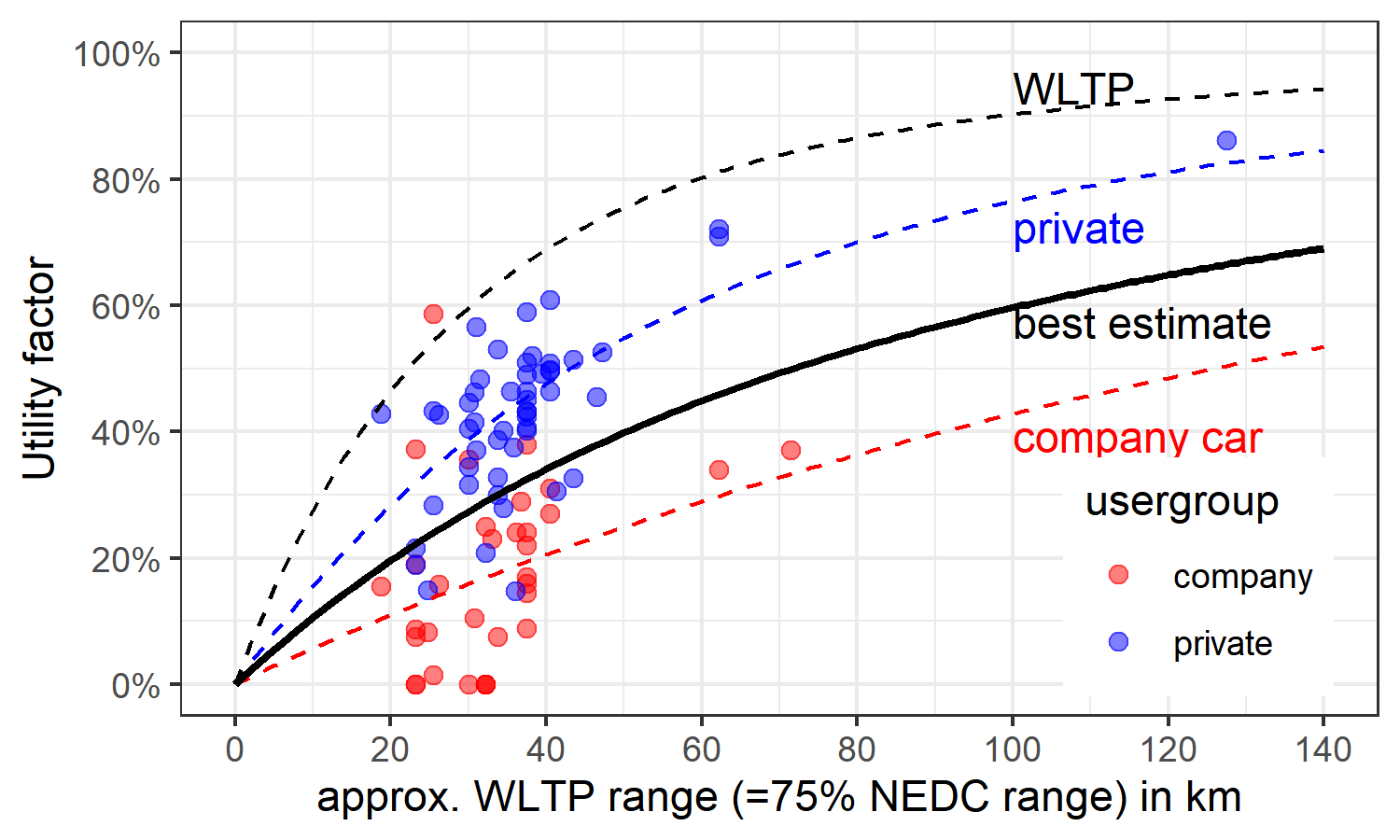Realistic Test Cycle Assessment of Plug-in Hybrid Electric Vehicles in Europe
Plug-in hybrid electric vehicles (PHEVs) can use electricity as well as conventional fuel for propulsion. But, the potential of PHEV to reduce local pollutant and global greenhouse gas emissions (GHG) strongly depends on their real-world usage and the share of kilometres driven on electricity, the so-called utility factor (UF). They have been criticised for delivering less CO2 savings than expected.
PHEV are also important for car manufacturers as they help to meet the European CO2 fleet targets. In these fleet targets, generic functions for UF of PHEV are used derived from in standardized testing procedures, or test cycles, such as the New European Driving Cycle (NEDC) or the Worldwide Harmonized Light-Duty Vehicles Test Procedure (WLTP). However, as empirical data on real-world usage of PHEV was scarce until recently, the current WLTP estimates were based on information provided largely by vehicle manufacturers and did not reflect real-world usage of PHEVs.


As of the beginning of 2021, there are about 978,000 PHEV in stock in the EU27 (according to www.eafo.eu). The largest markets are Germany (287,000 PHEV in stock), Sweden (132,400), France (132,300), the Netherlands (108,700), Belgium (75,000), Finland (45,600), Italy (44,200), and Spain (43,500). All other markets have less than 30,000 PHEV in stock (as of beginning 2021). Figure 1 shows the percentage.
Here, we cover private and company cars from Germany, the single largest PHEV market in Europe and company cars from the Netherlands. Both market contain about 40% of the PHEV in stock in the EU27.
We aimed to provide UF estimates that resemble the WLTP functional form but are based on empirical PHEV usage data. For this purpose, real-world data on PHEV usage is taken to determine empirical parameters for generic UF functions. The chosen UF function resembles the WLTP UF function, but varies one parameter.
We fitted the existing WLTP UF function to empirical PHEV usage for 1,385 private PHEV from Germany and 10,872 company cars from Germany and the Netherlands. These two markets cover about 40% of PHEV in Europe. We find that the current WLTP UF parameters are too optimistic about real-world UF since long-distance driving was missing in earlier estimates, actual charging is less frequent than commonly assumed and real-world all-electric ranges are lower than WLTP ranges. All three factors lower the actual UF compared to the WLTP UF. We empirically obtain modified UF curves for both user groups and one joint UF curve for both groups assuming 50% stock share for each (see figure 2).
Our best estimate for a realistic UF curve is the WLTP UF curve with the dn parameter changed from dn= 800 km in WLTP to dn= 1540 km in real-world operation for private cars and to dn= 4200 km for company cars. The best joint estimate with the assumption of 50% private and 50% company cars in PHEV stock is with dn= 2460 km. Our results show that the existing but unrealistic WLTP UF curve can be easily modified to obtain more realistic UF curves for PHEV in Europe.